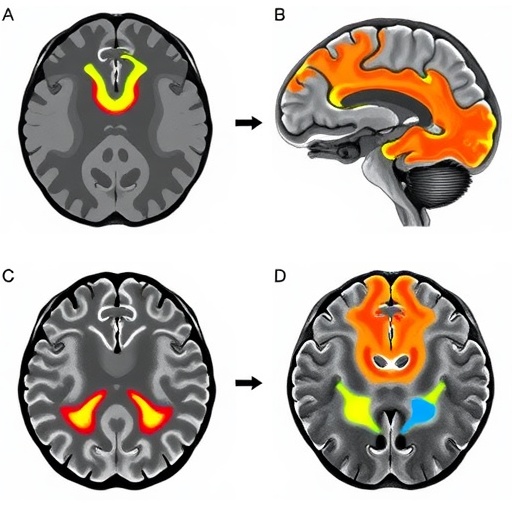
In recent developments in cardiovascular medicine, a new expert consensus statement has emerged from the Society for Cardiovascular Angiography & Interventions (SCAI), offering interventional cardiologists and heart surgery teams valuable guidance for alternative approaches to transcatheter aortic valve replacement (TAVR). The document reflects a growing acknowledgment of the limitations faced by certain patients who do not have adequate access through the femoral arteries for this critical procedure. Over the last decade, TAVR has rapidly transformed into a pivotal treatment option for patients struggling with aortic stenosis, particularly those exhibiting no symptoms. However, a subset of patients encounters significant barriers due to compromised femoral vascular access.
Navigating this challenge, SCAI’s latest guidelines advocate for alternative techniques that have demonstrated improved safety and efficacy for TAVR. One of the prominent figures involved in the creation of these guidelines, Dr. Matthew W. Sherwood, highlights the need for innovation in patient access techniques. He emphasizes that despite advancements in medical devices, there remains a gap that necessitates the development of robust methodologies to facilitate TAVR procedures for patients lacking adequate femoral access. This targeted guidance aims to enhance patient outcomes considerably, particularly among elderly or frail individuals with complex vascular conditions who may be at greater risk of complications during procedures.
Published in the Journal of the Society for Cardiovascular Angiography and Interventions (JSCAI), the expert consensus statement identifies two primary alternative access methods: transcarotid and transcaval routes. These techniques are favored over older methods like transaxillary access, which, while viable, are associated with higher risks of stroke and other complications. This key distinction underscores the guidelines’ focus on modern access strategies that are yielding better patient outcomes. In particular, the transcarotid and transcaval access points have demonstrated significant promise due to their favorable safety profiles when compared to previously established practices.
Moreover, the guidelines discourage the use of techniques such as transapical and direct aortic access, which have not kept pace with advancements in technology or patient safety considerations. By outlining these recommendations, SCAI seeks to empower practitioners with evidence-based strategies for navigating the complexities of TAVR. The growing body of observational evidence has informed these guidelines, allowing professionals to make decisions that prioritize patient safety and effective care.
In conjunction with these alternative access recommendations, the guidelines also highlight the advancements in device technology and imaging guidance that support the success of TAVR procedures. Improved imaging techniques play an invaluable role in the identification and assessment of anatomical considerations for patients, aiding clinicians in selecting the most appropriate access strategy. This intersection of technological innovation with clinical practice is paving the way for enhanced procedural success rates, leading to better overall patient care.
Dr. Paul D. Mahoney, another esteemed member of the SCAI Structural Heart Disease Council, reiterates the intention behind these guidelines: to help clinicians navigate the evolving landscape of TAVR as it transitions from an experimental procedure into a widely accepted standard of care. As the patient population needing TAVR continues to expand, it becomes increasingly critical to identify best practices that align with individual patient needs and clinical evidence. The guidelines advocate for a standardized approach that includes the utilization of experienced proctors to ensure that practitioners are well-equipped to employ alternative access techniques effectively.
The call for standardization is not merely a suggestion, but a fundamental requirement for advancing the quality of care in TAVR. By emphasizing the importance of adopting established protocols at individual practice sites, the guidelines seek to reduce variability in technique and outcomes, leading to a more streamlined approach to TAVR procedures. The focus on solidifying these practices is essential as clinicians work to navigate the challenging terrain of cardiovascular disease management.
An additional layer of complexity is introduced by the need for continued research into the efficacy and safety of alternative access techniques. The guidelines acknowledge that while substantial progress has been made, there remains an imperative for further investigation to thoroughly understand the risk-benefit profiles of various approaches. Ongoing research will not only enhance current practices but may reveal novel techniques, such as intravascular lithotripsy, which hold the potential to revolutionize the field further.
Dr. Sherwood emphasizes the importance of maintaining a commitment to research and innovation within the realm of patient care. The desire to ensure the best possible outcomes for TAVR patients fuels the ongoing exploration of alternative access methods, reaffirming the commitment of cardiovascular professionals to exceed the limitations imposed by existing practices. Such dedication to patient care is vital as the medical community strives for excellence in treatment outcomes.
As interventional cardiology forges ahead, the healthcare landscape continues to evolve, guided by evidence-based practices and patient-centered care philosophies. The SCAI’s recent consensus statement not only provides much-needed guidance for performing TAVR procedures safely and effectively but also signifies a broader trend in medicine towards rationalizing and standardizing practices. This shift underscores the critical nature of collaboration, education, and continual learning within the healthcare field as professionals work diligently to optimize treatment options for patients with cardiovascular diseases.
Overall, this consensus statement sets a new benchmark within the field of interventional cardiology. By outlining preferred access strategies and emphasizing the importance of ongoing research, the SCAI ensures that clinicians will be well-equipped to provide optimal care for patients needing TAVR. The implications for clinical practice are profound, promising safer procedures and better outcomes for some of the most vulnerable patient populations.
As this field of medicine evolves, it is imperative for healthcare providers to remain informed of the latest advancements in techniques and technology. The commitment to patient-centered care, coupled with expertise and innovation, will undoubtedly lead to a brighter future for patients with aortic stenosis seeking life-saving treatment options through TAVR.
Subject of Research:
Article Title: SCAI Expert Consensus Statement on Alternative Access for Transcatheter Aortic Valve Replacement
News Publication Date: 25-Feb-2025
Web References: DSAI Article
References:
Image Credits:
Keywords: Cardiology, TAVR, Transcatheter Aortic Valve Replacement, Vascular Diseases, Alternative Access Techniques, Cardiovascular Medicine, Expert Consensus, Patient Outcomes, Aortic Stenosis, Interventional Cardiology.
Tags: addressing femoral access limitationsalternative access techniques for TAVRcardiovascular medicine advancementscomplex vascular conditions managementelderly patients and TAVRenhancing access for heart surgeryimproving safety in TAVR proceduresinterventional cardiology innovationsnon-femoral access methodspatient outcomes in aortic stenosis treatmentSCAI expert consensus statementtranscatheter aortic valve replacement guidelines





